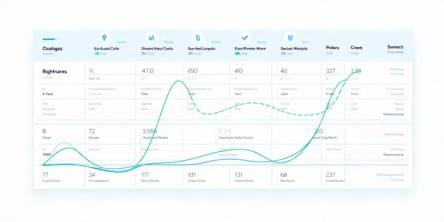Using the CI/CD Approach for Mobile App Development Transformation.

In the dynamic realm of mobile app development, Continuous Integration (CI) and Continuous Deployment (CD) have become crucial practices to ensure the efficient and reliable delivery of high-quality applications. CI/CD pipelines play a pivotal role in automating the integration of changes from various developers and deploying applications to production environments. This automation expedites the development cycle and reduces the risk of introducing errors, ultimately elevating the overall quality of the application.
Additionally, CI/CD empowers developers to promptly adapt to market changes and user feedback, making it an indispensable tool in contemporary mobile app development.
In this article, I will delve into the distinct phases of CI/CD, shed light on its benefits in mobile app development, and showcase some commonly utilized tools in this context.
Stages Of CI/CD For Application Development Process
The following phases or stages act as checkpoints to verify specific code characteristics. The subsequent builds and releases are halted if the code fails at any stage.
• Source: This stage is commonly referred to as version control, focusing on the organized and versioned storage as well as the management of source code. Developers can generate or edit code on their systems before uploading it to a version control system such as Git or Subversion.
• Build: During this phase, the source code is transformed into an executable state. This might include compiling, linking, and packaging the code.
• Test: This phase involves conducting automated tests, like unit and integration tests. The goal is to create an automated and standardized development, packaging, and testing procedure.
• Deploy: This is the final phase, where all modifications to the code are automatically implemented in the selected environments.
Benefits Of CI/CD In Mobile App Development
Continuous Integration/Continuous Deployment (CI/CD) pipelines offer several benefits for mobile app development, such as:
• Faster iterations: Facilitating faster iterations is a crucial benefit of CI/CD pipelines. The capacity for rapid iteration and adaptation is essential in a swiftly changing technological environment. Continuous Integration/Continuous Deployment (CI/CD) pipelines are pivotal in automating the seamless integration of fresh code with the existing code base, markedly diminishing the period between development cycles. Consequently, updates, novel features, and bug fixes can be expedited to end users. Moreover, the automated nature of this process allows for more frequent execution without burdening the development team excessively. This results in heightened efficiency, enhanced productivity, and an improved product for the user.
• Easier deployment: CI/CD pipelines simplify the deployment process in mobile app development. In the conventional approach, deployments are intricate and time-intensive, often necessitating manual intervention. Conversely, implementing CI/CD pipelines automates the deployment, minimizing the risk of human error and considerably expediting the entire process. This acceleration translates to the swift and dependable delivery of new features, updates, and fixes to users. Additionally, automated deployments facilitate frequent releases, empowering teams to address market dynamics adeptly. Consequently, this enhances the user experience and enables the development team to promptly respond to feedback or issues, guaranteeing the provision of a top-tier product.
• Quality assurance: A significant advantage of CI/CD pipelines in mobile app development is quality assurance. CI/CD pipelines often incorporate automated testing, which ensures that every integration is validated against predefined criteria or standards. This assists in the early identification and resolution of issues during the development phase, minimizing the likelihood of bugs reaching the production stage. Detecting errors at an early stage enables developers to address them promptly, thereby saving time and resources. This continuous testing provides a safety net that allows developers to innovate and experiment. CI/CD pipelines play a crucial role in maintaining the quality of the mobile application, enhancing user satisfaction, and building reliable and robust products.
• Cost-effective: The integration of CI/CD pipelines into mobile app development has the potential to result in substantial cost savings. This integration not only streamlines the execution of manual tasks, significantly reducing time expenditures, but also diminishes the likelihood of expensive errors. Automated testing facilitates the early identification of issues, allowing for their resolution before they escalate. This preemptive approach helps avoid the elevated costs associated with bug fixing during later stages of development or post-release. Ultimately, incorporating CI/CD pipelines can enhance the cost-effectiveness and efficiency of the development process, leading to a more optimal allocation of resources and an improved return on investment.
• Risk reduction: Risk reduction is a significant benefit of employing CI/CD pipelines in mobile app development. CI/CD pipelines automate the integration and deployment processes, significantly reducing human error risk. Furthermore, these systematic workflows guarantee the proper functioning of the application on diverse devices and platforms, minimizing the likelihood of encountering platform-specific issues. Automated testing, an essential element within CI/CD pipelines, facilitates early identification and resolution of issues, diminishing the probability of bugs reaching the production stage. By minimizing these risks, CI/CD pipelines contribute to developing more reliable and robust mobile applications, enhancing user experience and satisfaction.
Tools for CI/CD pipelines
Various tools are available for establishing a CI/CD pipeline in mobile app development. Here are some widely used options:
• CircleCI: This CI/CD service based in the cloud facilitates automated building, testing, and deployment.
• Jenkins: Jenkins is an open-source automation server and offers numerous plugins to assist with building, deploying, and automating any project.
• TravisCI: TravisCI is a continuous integration service that is hosted and utilized for building and testing software projects hosted on GitHub.
• GitLab CI/CD: As a component of GitLab, GitLab CI/CD provides a framework that allows software development teams to create, test, and deploy software.
• GitHub Actions: GitHub Actions simplifies the automation of all software workflows, complete with top-tier CI/CD, allowing developers to build, test, and deploy code from GitHub.
Final Words
The importance of CI/CD in mobile app development, particularly when developing custom mobile apps, cannot be overlooked. By automating repetitive tasks, CI/CD pipelines allow developers to focus on creating unique features and improving user experience, which is especially crucial in the competitive landscape of custom mobile app development. Hence, adopting CI/CD pipelines is a strategic approach to developing efficient, reliable, high-quality mobile apps.
Similar Articles
Building lending software isn’t just a technical project—it’s a business decision. Whether you're a fintech founder or part of a traditional lending institution trying to go digital, three questions will shape everything that follows
Learn why robust security is crucial for super app development. Explore key strategies and best practices for mobile app development security.
Walkie-talkies with an extensive reception capacity have changed significantly when it comes to portable communication by displaying cutting-edge features with seamless connectivity that covers more than just the state
USB-C technology has revolutionized the way we charge our devices, offering faster charging speeds, higher power delivery, and universal compatibility across multiple devices
Discover expert mobile app development strategies to create a viral app that attracts users and boosts engagement
Optimize app localization for iOS users across the EU with language, cultural, and regulatory adaptations. Engage users and boost retention with these tips!
Discover the top 10 mobile app development trends of 2024! Explore 5G, AI, AR/VR, blockchain, and more to stay ahead in the ever-evolving app development landscape.
With its triple-lens design and fantastic photo and video quality, the iPhone 11 Pro Max is extensively acknowledged for its superior camera system. But problems can occur with also one of the most advanced technologies. If you're having issues with the iPhone 11 pro max camera lens, knowing the typical problems and how to repair them
Protect your app from threats with AppSealing's robust, all-inclusive security solution. Safeguard user data, ensure compliance, and maintain top performance.









